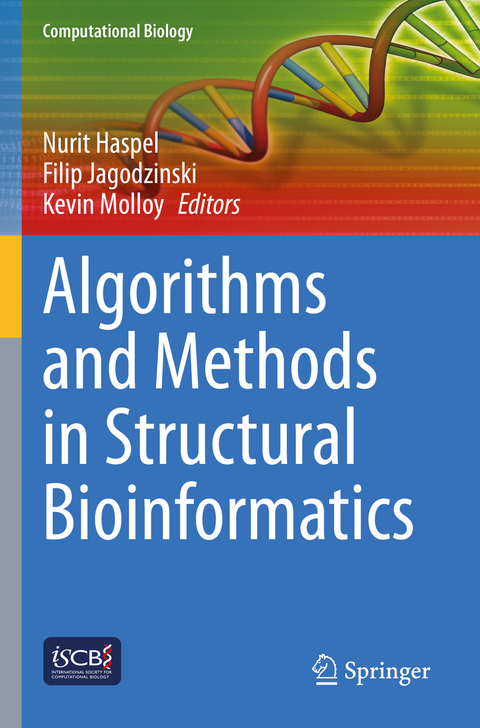
Algorithms and Methods in Structural Bioinformatics
Springer International Publishing (Verlag)
978-3-031-05916-2 (ISBN)
In this book we focus on a number of topics in Structural Bioinformatics: Cryo-EM structural detection, protein conformational exploration, elucidation of molecular binding surface using geometry, the effect of mutations, insertions and deletions on protein structural stability, and protein-ligand binding.
lt;b> Nurit Haspel has been a member of the Department of Computer Science at the University of Massachusetts, Boston since 2009. She received her Ph.D. from Tel Aviv University in 2007. Her research lies in the areas of computational structural biology and structural bioinformatics. Her goal is to better understand the structure and flexibility of proteins, to model conformational changes in proteins, and to model protein-protein interactions. In her research, she focuses on both the development of novel algorithms and the application of state-of-the-art existing methodologies to various problems in molecular biology and biochemistry.
Filip Jagodzinski joined the faculty of Western Washington University in 2015. He earned his Ph.D. from the University of Massachusetts, Amherst in 2012, and his MS from Villanova and BS from Columbia University. With his undergraduate and graduate students, and in coordination with Machine Learning and biology and chemistry collaborators, Filip develops computational recipes for predicting the structural properties of disease-causing protein mutants and inferring the effects of indels. Their tools are often disseminated via web servers or as open-source software.Kevin Molloy joined the faculty at James Madison University in 2018. He earned his Ph.D. from George Mason University in 2015, his MS from George Mason in 2011, and his BS from George Mason in 1998. His research focuses on studying the flexibility of protein systems and the role this flexibility plays in their function, specifically in antimicrobial peptides. He is also developing algorithms to characterize the structural rearrangements that proteins undertake to fluctuate their functional roles and how amino acid sequence mutations impact these transitions.
1. Protein-Ligand Binding with Applications in Molecular Docking.- 2. Explaining Small Molecule Binding Specificity with Volumetric Representations of Protein Binding Sites.- 3. Machine Learning-based Approaches for Protein Conformational Exploration.- 4. Low Rank Approximation Methods for identifying Impactful Pairwise Protein Mutations.- 5. Detection and analysis of amino acid insertions and deletions.- 6. DeepTracerWeb Service for Fast and Accurate De Novo Protein Complex Structure Prediction from Cryo-EM.
| Erscheinungsdatum | 05.09.2023 |
|---|---|
| Reihe/Serie | Computational Biology |
| Zusatzinfo | IX, 114 p. 51 illus., 37 illus. in color. |
| Verlagsort | Cham |
| Sprache | englisch |
| Maße | 155 x 235 mm |
| Gewicht | 200 g |
| Themenwelt | Informatik ► Weitere Themen ► Bioinformatik |
| Naturwissenschaften ► Biologie | |
| Technik | |
| Schlagworte | Algorithms in Bioinformatics • Computational Biology • Cryo-EM • insertions and deletions • protein binding surface • protein-ligand binding • protein mutations • protein-protein interactions • Structural bioinformatics |
| ISBN-10 | 3-031-05916-6 / 3031059166 |
| ISBN-13 | 978-3-031-05916-2 / 9783031059162 |
| Zustand | Neuware |
| Haben Sie eine Frage zum Produkt? |
aus dem Bereich


